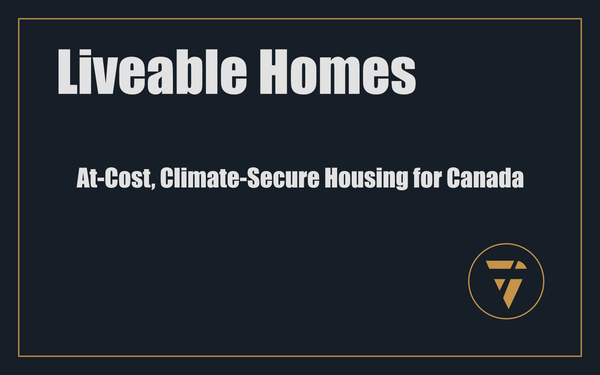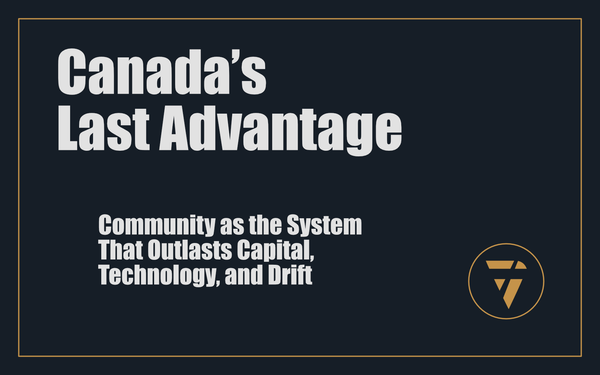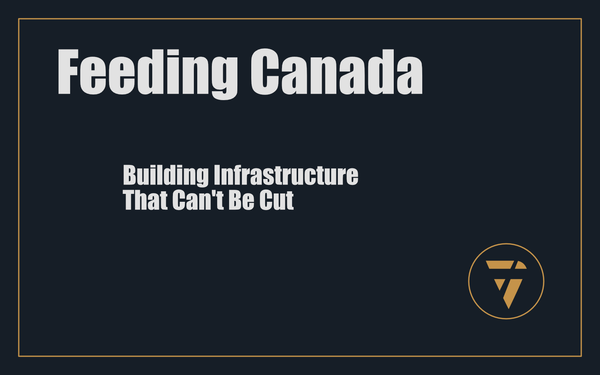If You're Against Bike Infrastructure...

You Are Conservative, You Are Economically Illiterate
They call it woke. They’ll say it’s virtue-signalling. That the money could’ve gone to “real” problems — schools, crime, business (misinformation, cops, grift). That it’s a niche indulgence for urban elites and hipsters who can’t afford a car. You’ve heard the script before.
But this isn’t a culture war.
This is a capital war.
And cities that fail to build bike infrastructure are not making a moral mistake. They’re making an economic one. A slow, compounding, structural error that bleeds productivity, crushes local business potential, and erodes long-term value from every tier of the socioeconomic ladder.
Let’s be clear: bikes are not symbolic. They are infrastructure. They are a logistics system. A mobility lever. A health multiplier. A commercial stimulant. And when protected, planned, and sequenced correctly — they are one of the highest-yielding public investments any modern city can make.
But if you’re still pretending this is about ideology... listen to Brent.

1. The Yield of Movement
Cities exist to move things. People. Ideas. Goods. Capital. The moment movement collapses, the city dies.
And movement by car is collapsing.
Traffic congestion is not just an annoyance. It's a tax on time, productivity, and GDP. In cities like Toronto, Vancouver, and Montreal, congestion costs billions annually in lost productivity and fuel waste. And it’s not getting better with more lanes. It’s getting worse. Because demand always expands to fill available capacity... it’s called induced demand, and it’s been proven for decades.
Now enter bike lanes... not as an alternative, but as an optimiser.
A protected bike lane can move up to 7 times more people per linear metre than a car lane during peak hours. It reduces vehicle volume. It shortens travel time for remaining drivers. It lowers maintenance costs due to exponentially lighter load impacts. And it does all this for a fraction of the construction and upkeep cost of a single traffic lane.
This isn’t efficiency. It’s alchemy.
2. Health Is an Economic Strategy
Every kilometre ridden instead of driven saves the public health system money. Not in theory... in actuarial reality.
Regular cycling is associated with a 40–60% reduction in risk for major non-communicable diseases: diabetes, heart disease, hypertension, stroke, depression. These aren’t soft statistics... they are direct cost drivers in every provincial healthcare budget. In Canada, over 50% of health spending is consumed by lifestyle-preventable chronic diseases.
Cities that enable active transportation through bike infrastructure do not just reduce emissions. They reduce emergency room visits. Prescription loads. Insurance premiums. Worker absenteeism. Long-term care costs. Mental health loads.
For every $1 spent on cycling infrastructure, conservative estimates place the return between $5 and $20 in healthcare cost savings over a decade.
That’s not idealism. That’s cash flow.
3. The Local Economy Multiplier
Cyclists do not just ride past your business. They stop.
Urban planners and retail analysts have known for years that pedestrian and cyclist traffic is stickier, more frequent, and more profitable than car traffic. Why? Because it’s frictionless. Park once. Walk or bike the strip. Shop in five stores instead of one. And spend more over time.
In New York, retail streets with protected bike lanes saw sales increase by 24% more than comparable areas without them. In Toronto, Bloor Street businesses saw a significant net gain in revenue once bike lanes were installed... despite initial resistance. Why? Because foot traffic and bike traffic drive volume, visibility, and time-on-site in a way that car-dependent plazas cannot match.
Bike lanes are not anti-business. They are pro-discovery. They are pro-footfall. They are pro-margin.
If you care about small business... you care about bike infrastructure.
4. Household Economics: Compression at Scale
Owning a car costs a Canadian household $9,000–$11,000 a year. It is the second-highest household expense after housing. For a family earning $60,000–$70,000, that’s up to 18% of net income gone... before a single grocery bill.
What happens when a household can downshift from two cars to one? Or from one to none?
Discretionary income rises. Emergency savings rise. Educational investment capacity rises. And where does that money go?
Into the local economy.
Bike infrastructure is a direct enabler of financial resilience... particularly for low- and middle-income families who cannot afford car repairs, insurance, or rising fuel costs.
This isn’t a lifestyle choice. This is income liberation.
5. Capital Attracts Capital
Investors don’t just look at taxes. They look at infrastructure.
Cities that install complete cycling networks send a signal to developers, capital allocators, and global mobility firms: “We’re planning for the future.” And future-ready cities attract future-forward capital.
Real estate value increases near protected bike lanes. Institutional investors now require ESG overlays for infrastructure investments. Carbon-reduction systems like active transportation networks qualify cities for preferential green bonds and infrastructure grants. All of that translates to more favourable capital terms, and deeper development pipelines.
When you build for bikes, you’re not courting cyclists. You’re courting capital. You’re courting real estate densification. You’re triggering upstream zoning improvements, regulatory fast-tracks, and adjacent infrastructure upgrades.
This is not urban beautification. This is investment-grade signalling.
6. The Conservative Illusion
Let’s confront the myth head-on.
Opposing bike infrastructure is not “fiscal conservatism.” It's anti-math.
If you're blocking a $2 million protected bike lane project that will yield $40 million in long-term public and private benefit, you're not being prudent. You're being ignorant.
If you're arguing that “no one uses the bike lanes” — you’re ignoring the simple principle of induced demand. Nobody used freeways before they existed. Nobody filled subways before they were built. You build the corridor. The motion comes.
If you're still asking why we “cater to cyclists,” ask instead: Why are we bleeding billions to subsidise traffic, parking, and emergency services for private vehicle use that benefits the few and bankrupts the rest?
The Final Cut
Bike infrastructure is not about bikes.
It’s about yield.
It’s about flow. Health. Commerce. Land use. Climate resilience. Social equity. Budget performance. Long-term city viability.
And if your argument against it is built on culture, convenience, or personal irritation... you’re not fit to be in the economic conversation.
This is not ideology. This is architecture. And cities that get it right will compound into dominance. Those that don’t will stagnate, suffocate, and slide.
So the next time someone says “bike lanes are woke” — look them in the eye and say it plain:
“If you’re against bike infrastructure, you’re not conservative. You’re economically illiterate.”
And then, keep building.
This is what I’m working on. Tell me what you think, I enjoy the conversation! Subscribe and follow the work in real time.
Thanks!
B

They say bike lanes are woke.
But nothing drives GDP, health savings, retail lift, or infrastructure ROI faster per dollar.
If you're against bike infrastructure, you're not conservative. You're economically illiterate.
PS -







